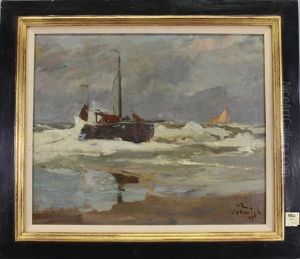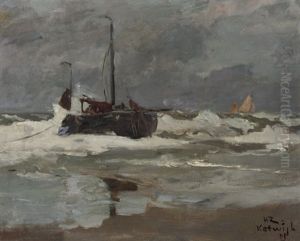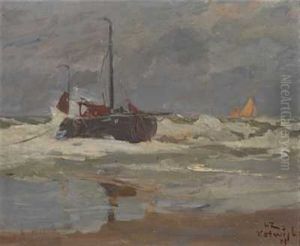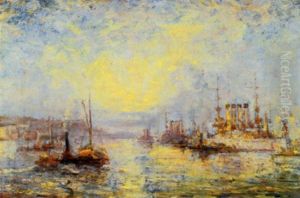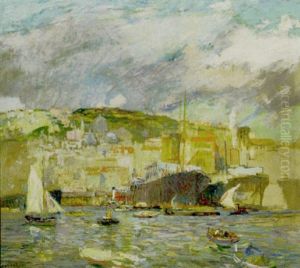Henry Reuterdahl Paintings
Henry Reuterdahl was a notable American painter and illustrator of Swedish descent, recognized particularly for his maritime paintings that vividly captured the spirit and drama of the sea and naval life. Born on August 12, 1870, in Malmö, Sweden, Reuterdahl showed an early talent for art and pursued his passion through education and practice.
In 1893, Reuterdahl made his way to the United States, where he further developed his artistic skills. He soon became known for his expertise in depicting naval scenes, which garnered the attention of both the public and the U.S. Navy. His work was characterized by a dynamic and realistic portrayal of ships and the sea, often highlighting the power and majesty of naval vessels.
Reuterdahl's talents led to his engagement as a correspondent and illustrator for various magazines, including 'The Saturday Evening Post' and 'Collier's.' His illustrations brought to life the experiences of sailors and the intricacies of naval operations, earning him widespread acclaim. During this time, he also contributed to the design of camouflage for ships, an innovative concept during World War I that aimed to protect vessels from enemy detection.
The artist's commitment to the navy was not only professional but also personal. He served in the U.S. Naval Reserve Force during World War I, which further informed his artistry. His first-hand experience of naval battles and life at sea enriched his work's authenticity and emotional depth. Reuterdahl's legacy includes large-scale paintings, such as those commissioned for the Naval Academy in Annapolis, which remain a testament to his vision and skill.
Henry Reuterdahl's contributions to American art and naval history were cut short when he passed away on December 21, 1925. Despite his relatively brief career, he left an indelible mark on the art world with his vibrant and evocative depictions of maritime scenes. Today, his work continues to be celebrated for its historical significance and artistic excellence.

